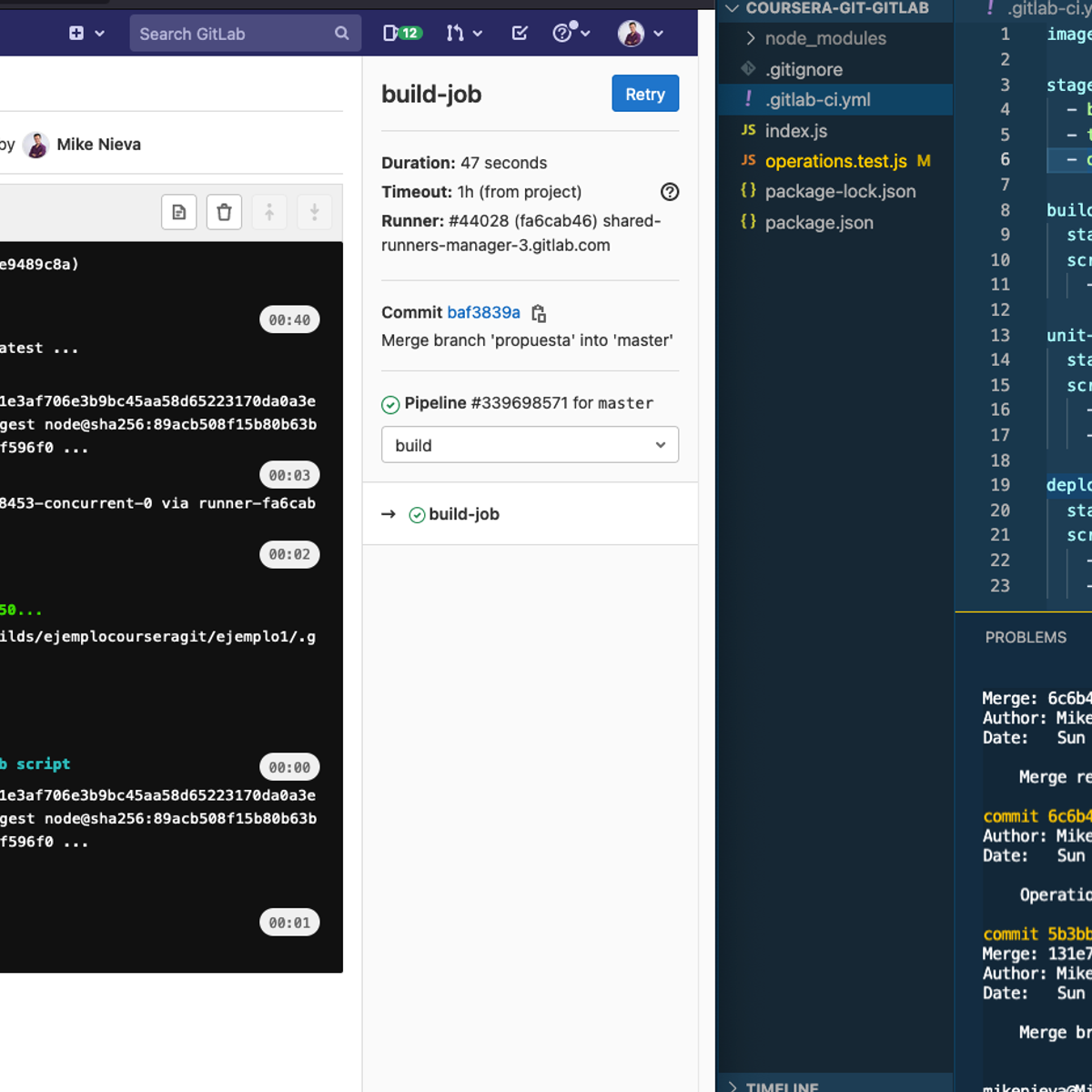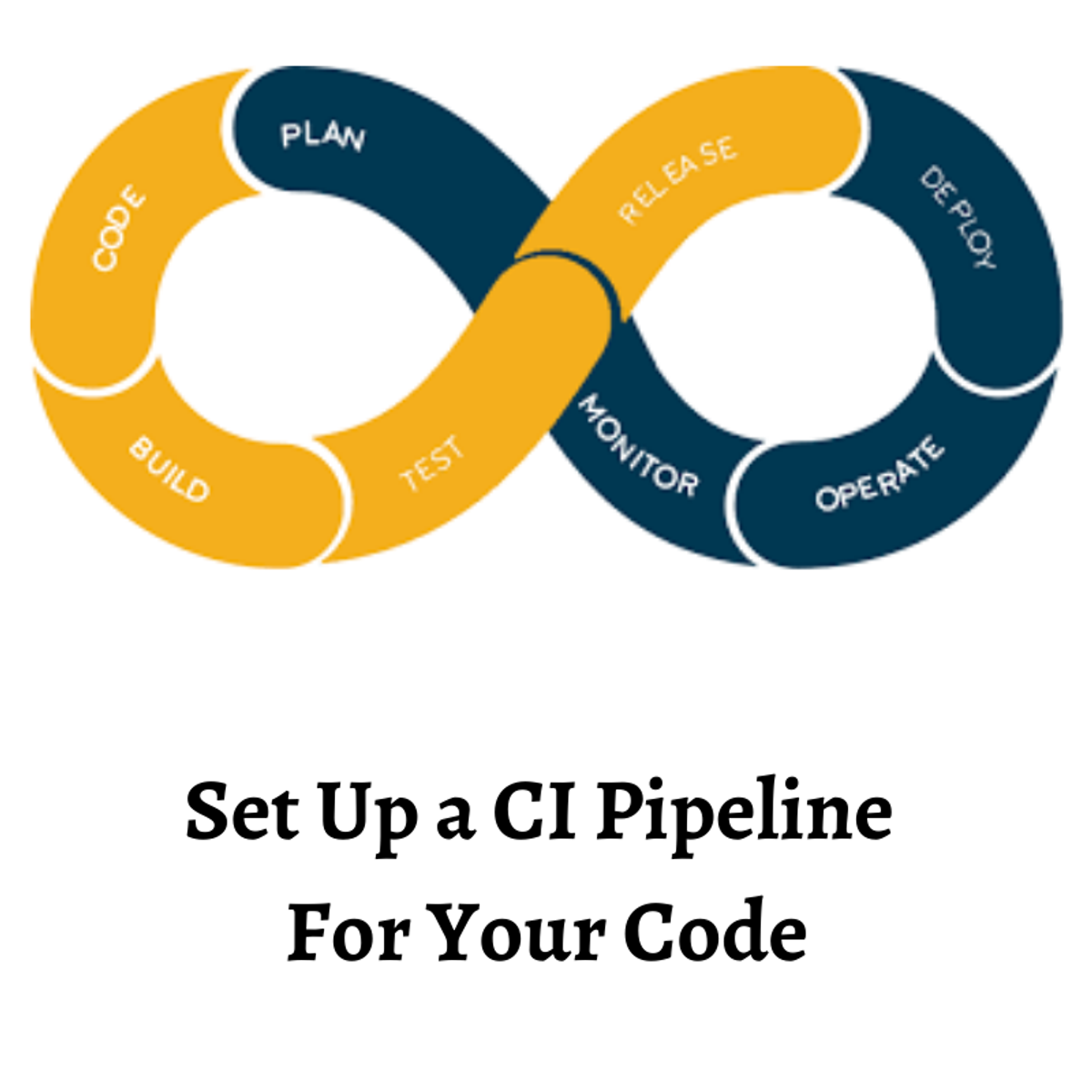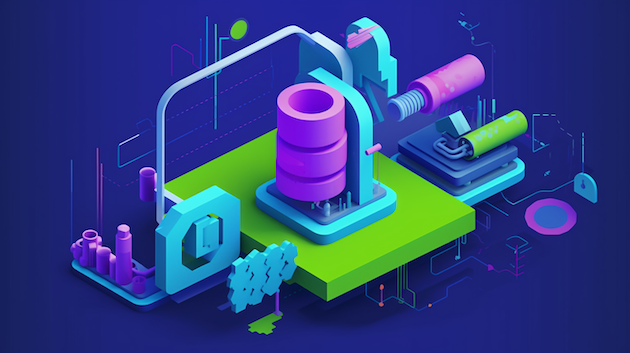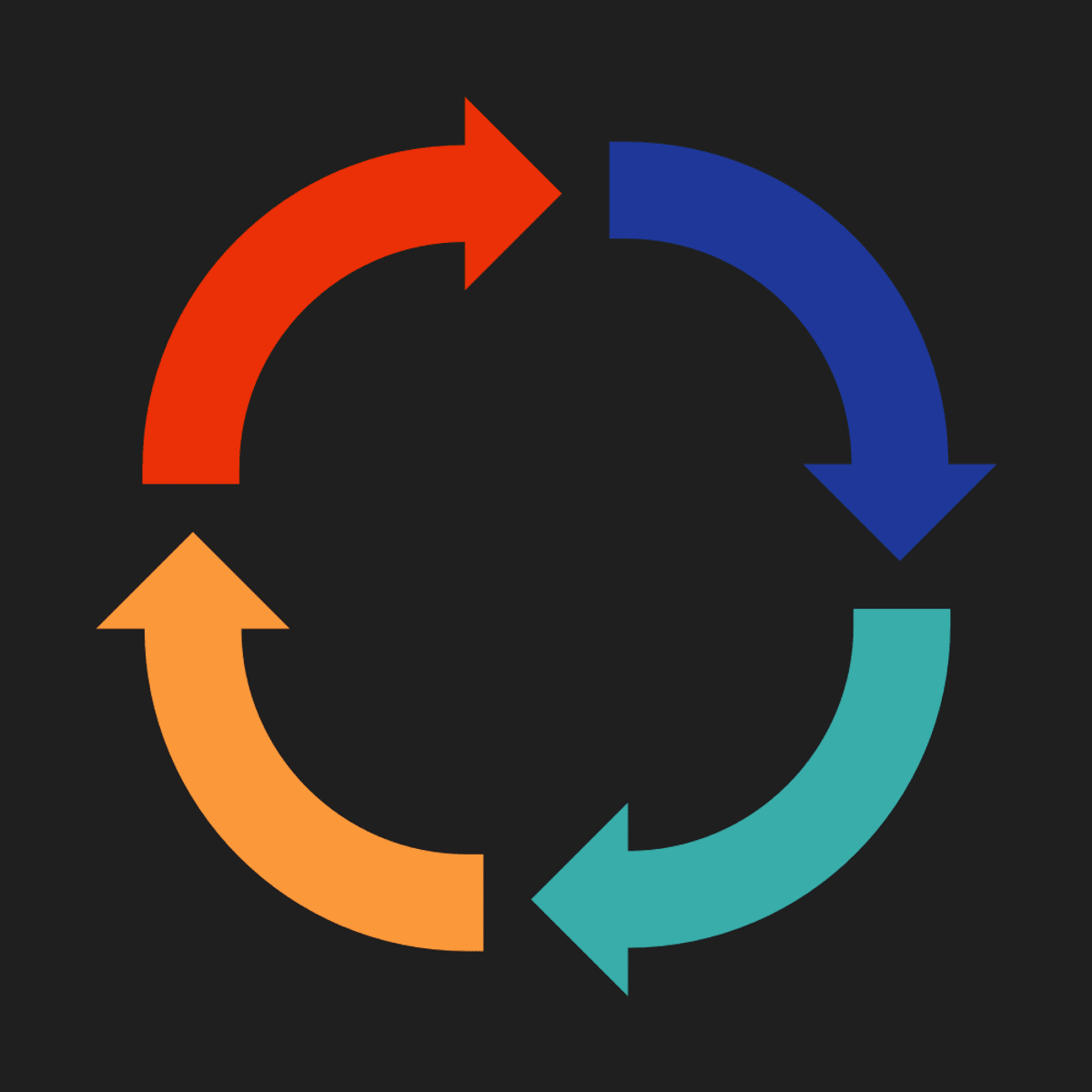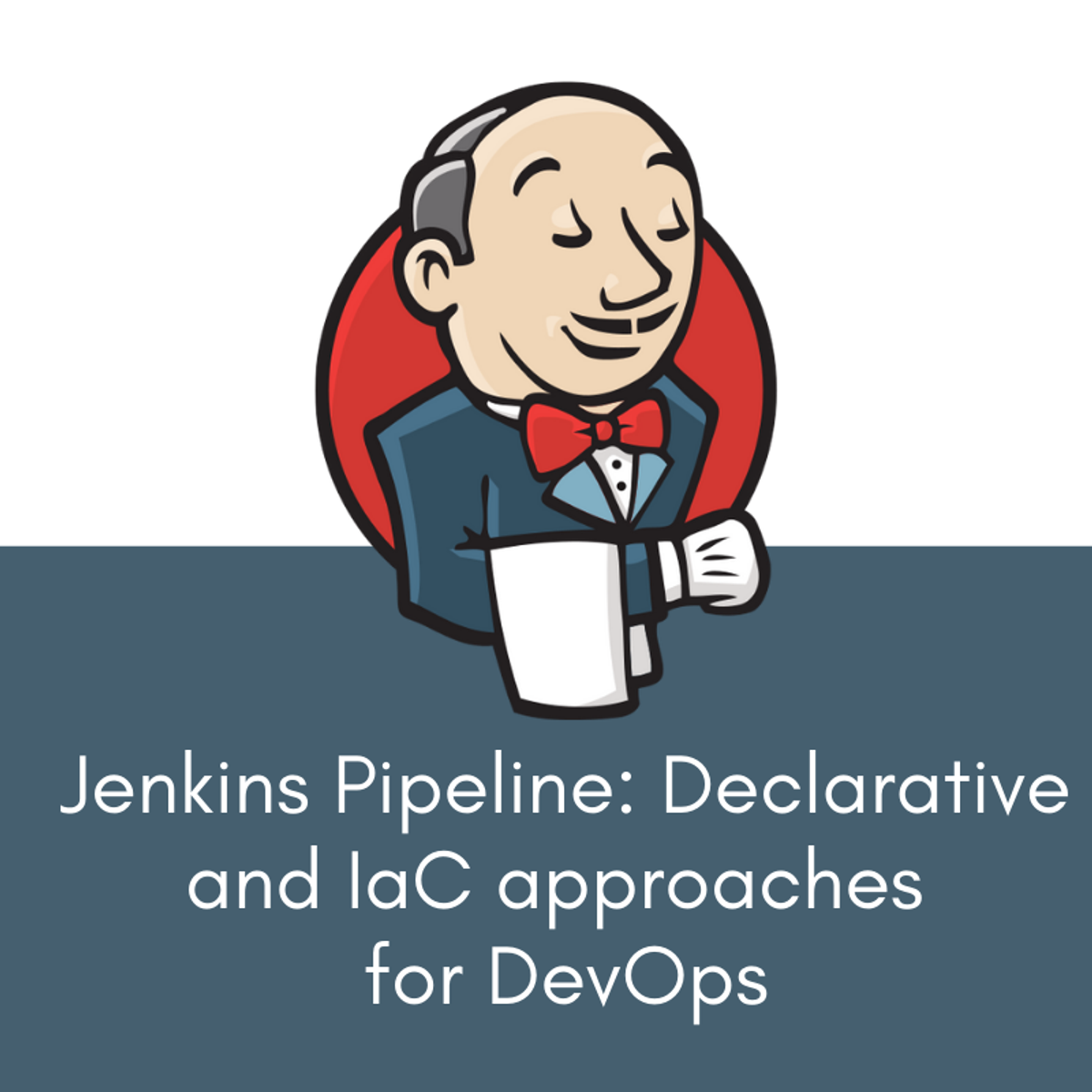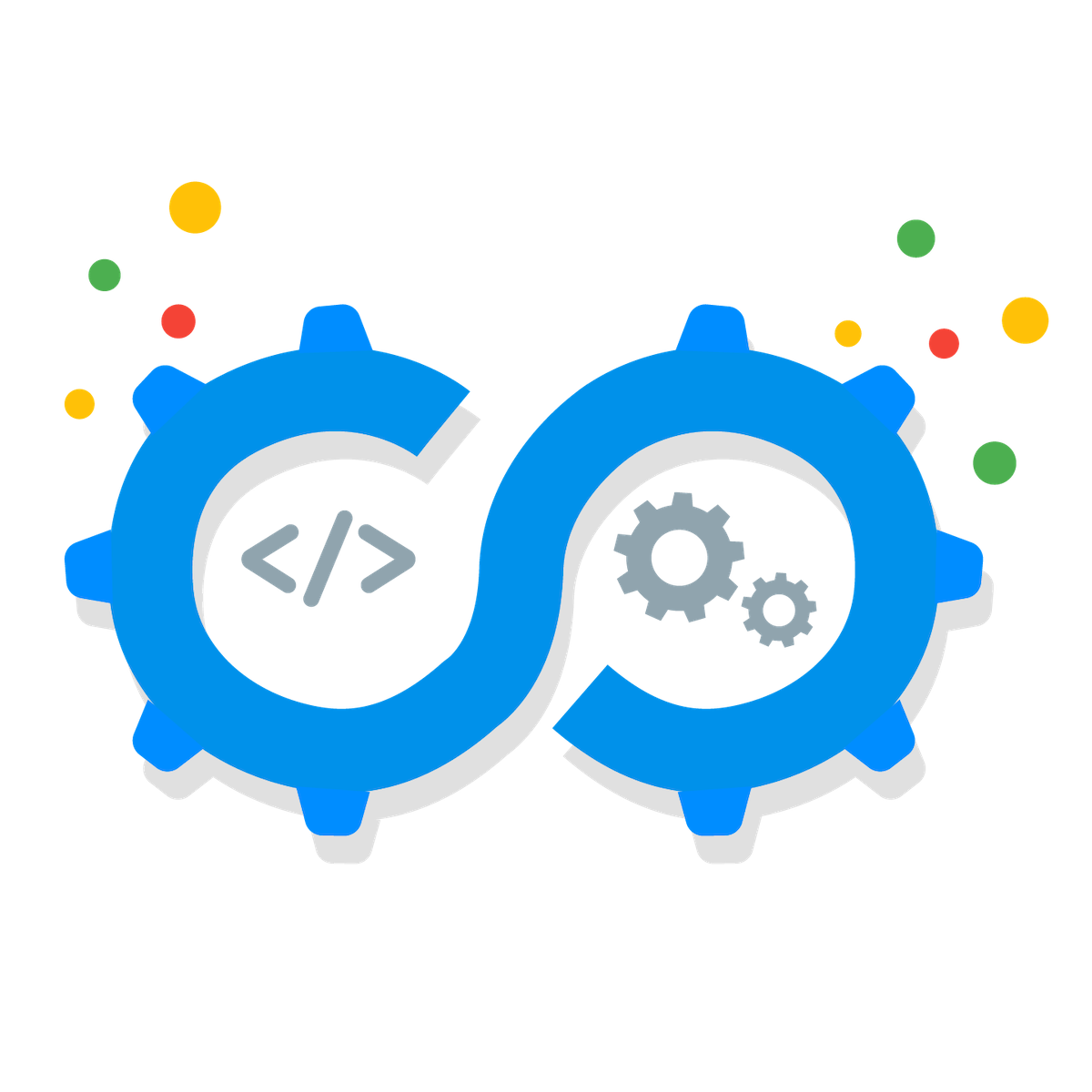Continuous Integration
Continuous Integration: A Comprehensive Guide
Continuous Integration (CI) is a cornerstone of modern software development, representing a set of practices that aim to improve both the speed and quality of software delivery. At its core, CI involves frequently merging all developers' working copies of code to a shared mainline, often several times a day. This frequent integration, coupled with automated build and testing processes, allows teams to detect problems early, reduce integration conflicts, and ultimately deliver more reliable software faster. For individuals exploring careers in technology or seeking to enhance their software development skills, understanding CI is becoming increasingly vital.
Working with Continuous Integration can be a highly engaging and rewarding experience. Imagine being part of a team where software changes are seamlessly integrated, tested, and made ready for deployment with remarkable efficiency. The ability to automate repetitive tasks frees up developers to focus on more creative and complex problem-solving. Furthermore, the collaborative nature of CI fosters a strong sense of teamwork and shared ownership over the codebase, leading to higher quality products and more agile development cycles. The constant feedback loop provided by CI systems also offers a continuous learning opportunity, helping developers refine their coding practices and deepen their understanding of the software lifecycle.
Introduction to Continuous Integration
Continuous Integration is a fundamental practice in modern software engineering, designed to streamline the development and release process. It emphasizes the importance of automating the build and testing of software every time a team member commits changes to version control. This approach helps identify and address bugs quicker, improve software quality, and reduce the time it takes to validate and release new software updates. Understanding CI is crucial for anyone involved in software development, from programmers to project managers.
What is Continuous Integration? Defining the Fundamentals
Continuous Integration (CI) is a development practice where developers regularly merge their code changes into a central repository, after which automated builds and tests are run. The primary goal of CI is to catch issues early in the development cycle, making them simpler and less costly to fix. Key principles underpinning CI include maintaining a single source repository, automating the build, making the build self-testing, ensuring everyone commits to the baseline every day, and keeping the build fast. By adhering to these principles, development teams can maintain a state of "continuous readiness," where the codebase is always in a deployable state.
Think of CI like a group of chefs working on a complex multi-course meal. Instead of each chef preparing their dish in isolation and only combining them at the very end (which could lead to clashing flavors or missing ingredients discovered too late), they frequently bring small components of their dishes to a central tasting table. At this table, an automated "taster" (the CI server) quickly checks if the new component works well with what's already there. If something is off, the chef is notified immediately and can fix it before it becomes a bigger problem. This frequent checking ensures the entire meal comes together smoothly.
This practice not only accelerates the detection of integration bugs but also fosters a culture of collaboration and shared responsibility among developers. When code is integrated frequently, developers are more aware of changes made by others and are incentivized to write modular, well-tested code. The rapid feedback loop provided by CI systems allows teams to iterate faster and respond more effectively to changing requirements.
A Brief History: The Evolution of CI
The concept of Continuous Integration isn't entirely new; its roots can be traced back to earlier software development methodologies that emphasized frequent builds and testing. Grady Booch first named and proposed CI in his 1991 method, although he did not advocate integrating several times a day. It gained significant traction with the rise of Extreme Programming (XP) in the late 1990s, where it was identified as one of the key practices. Martin Fowler, a prominent figure in software development, further popularized the term and its principles in the early 2000s.
Initially, implementing CI required significant manual setup and custom scripting. However, the emergence of dedicated CI servers like CruiseControl (released in 2001) and later Hudson (which evolved into Jenkins) democratized the practice. These tools automated the build, test, and reporting processes, making CI accessible to a broader range of development teams. The evolution of version control systems, particularly distributed systems like Git, further facilitated CI by simplifying branching and merging workflows.
Today, CI is often part of a larger set of practices known as CI/CD, which stands for Continuous Integration and Continuous Delivery or Continuous Deployment. The proliferation of cloud computing and containerization technologies has also profoundly impacted CI, enabling more scalable, flexible, and efficient CI pipelines. Modern CI systems are highly sophisticated, offering deep integrations with various development tools and cloud platforms.
These courses can help build a foundation in CI/CD principles and their historical context.
Why CI Matters: Key Benefits in Modern Software Development
The adoption of Continuous Integration brings a multitude of benefits to software development teams and organizations. One of the most significant advantages is the reduction of risks associated with integration. By integrating code frequently, typically multiple times a day, teams can identify and resolve conflicts and bugs early, when they are smaller and easier to manage. This contrasts sharply with traditional approaches where integration happens late in the development cycle, often leading to a lengthy and painful "integration hell."
CI also leads to improved software quality. Automated tests are an integral part of the CI process, ensuring that every change is validated against a comprehensive suite of tests. This continuous testing provides a safety net, allowing developers to refactor and enhance code with greater confidence. The immediate feedback loop helps developers learn from mistakes quickly and promotes better coding habits. Furthermore, because the codebase is always in a near-releasable state, teams can deliver updates and new features to users more frequently and reliably.
Beyond the technical benefits, CI fosters a more collaborative and efficient development culture. It encourages communication and shared ownership, breaking down silos between developers. The automation of repetitive tasks like building and testing frees up developers to focus on value-adding activities, such as designing new features or improving existing ones. This can lead to increased developer productivity and satisfaction. Ultimately, the speed, quality, and efficiency gains from CI translate into a competitive advantage for businesses, enabling them to respond more rapidly to market changes and customer needs.
Core Concepts and Workflow of Continuous Integration
Understanding the core concepts and typical workflow of Continuous Integration is essential for appreciating its mechanics and impact on software development. CI is not just a tool, but a practice built upon a set of principles that guide how development teams collaborate and manage their codebase. It revolves around automation, version control, and a disciplined approach to merging code changes.
The Automation Engine: Testing and Build Processes
Automation is the heart of Continuous Integration. Every time a developer commits code to the central repository, an automated process kicks in. This process typically starts with compiling or building the software. If the build is successful, a suite of automated tests is executed. These tests can range from unit tests, which check individual components or functions, to integration tests, which verify that different parts of the application work together correctly. Some pipelines might also include other forms of automated checks, like static code analysis to identify potential bugs or style issues, or even performance and security scans.
The goal of this automated pipeline is to provide rapid feedback to the development team. If a build fails or a test does not pass, the CI system immediately alerts the team. This allows developers to quickly identify the problematic change and address it. Because integrations happen frequently, the amount of new code introduced since the last successful build is small, making it easier to pinpoint the source of the error. This contrasts with traditional methods where bugs might only be discovered much later, after many more changes have been made, complicating the debugging process.
To illustrate, imagine a car assembly line. Each station adds a specific part to the car. After each part is added, an automated check (like a sensor or a quick visual inspection robot) ensures the part was fitted correctly and doesn't interfere with previously added components. If a problem is detected, the line might stop, or the specific car might be flagged for immediate attention right at that station. This is far more efficient than waiting until the entire car is assembled to find out a crucial early component was faulty. In CI, the "parts" are code changes, and the "automated checks" are the build and test processes.
These courses delve into the automation aspects of CI/CD pipelines.
For those looking for foundational texts on software development practices that include CI, these books are highly recommended.
Keeping Track: Integration with Version Control Systems
Version Control Systems (VCS) are fundamental to Continuous Integration. A VCS, such as Git, Subversion, or Mercurial, allows multiple developers to work on the same codebase simultaneously. It tracks every change made to the code, who made it, and when. This history is crucial for understanding the evolution of the software and for rolling back to previous versions if necessary.
In a CI environment, developers commit their changes to the main development line (often called 'main', 'master', or 'trunk') in the VCS frequently. The CI server monitors this central repository for new commits. When it detects a change, it automatically triggers the build and test pipeline. This tight integration between the VCS and the CI server is what enables the "continuous" aspect of CI.
The VCS also plays a critical role in managing different streams of work through branching. While the ideal CI practice involves frequent commits to the mainline, feature branches are often used for developing new features or fixing complex bugs in isolation before merging them back. The CI system can be configured to build and test these branches as well, providing feedback even before changes are integrated into the mainline. This helps ensure that feature branches are stable and ready for integration, minimizing disruptions to the main development effort.
To understand how Git integrates with CI workflows, these resources can be helpful.
Managing Change: Branching Strategies and Merge Practices
Effective branching strategies are crucial for a smooth CI process, especially in larger teams. While the purest form of CI encourages working directly on the mainline or very short-lived feature branches, various models exist to suit different team sizes and project complexities. Common strategies include Gitflow, GitHub Flow, and Trunk-Based Development.
Trunk-Based Development (TBD) is often considered the most aligned with CI principles. In TBD, developers collaborate on code in a single branch called 'trunk' (or 'main'/'master'), resisting the urge to create other long-lived development branches. If branches are used, they are very short-lived (a couple of days at most) and are merged back into the trunk frequently. This minimizes the chances of complex merge conflicts and keeps the codebase in a consistent state.
Regardless of the strategy, the merge process is a critical point. When a feature branch is ready to be integrated, it's merged into the mainline. CI systems can automate checks during this process, such as ensuring the branch passes all tests before allowing the merge. Some teams also employ practices like "pull requests" or "merge requests," where code changes are reviewed by peers before integration. This human review, combined with automated CI checks, helps maintain code quality and shared understanding across the team. The goal is to make merges a non-event – a routine, low-risk activity that happens multiple times a day.
Learning about different branching strategies and how they impact CI is important. Consider exploring courses that cover version control best practices.
Essential Tools and Technologies for Continuous Integration
A robust Continuous Integration setup relies on a well-chosen set of tools and technologies. These tools automate the various stages of the CI pipeline, from code compilation and testing to artifact storage and deployment notifications. The landscape of CI tools is diverse, offering solutions for different project sizes, technology stacks, and organizational needs.
Choosing Your Platform: An Overview of CI/CD Systems
At the heart of any CI implementation is a CI/CD platform or server. These platforms orchestrate the entire CI workflow. Popular choices include Jenkins, GitLab CI/CD, GitHub Actions, CircleCI, Travis CI, and Azure DevOps. Jenkins is a long-standing, open-source option known for its extensive plugin ecosystem, allowing for immense customization. GitLab CI/CD is tightly integrated with the GitLab version control platform, offering a seamless experience from code commit to deployment. GitHub Actions provides CI/CD capabilities directly within GitHub repositories, leveraging a large community and marketplace of pre-built actions.
When selecting a CI/CD platform, factors to consider include the size of your team, the complexity of your projects, your existing technology stack, budget (as some are commercial SaaS offerings while others are open-source and self-hosted), and the level of integration required with other tools. Many modern platforms also offer cloud-based solutions, which can reduce the overhead of managing CI infrastructure.
It's also worth noting that many platforms are moving towards configuration-as-code, where the CI pipeline itself is defined in a file (e.g., a YAML file) that is version-controlled alongside the application code. This approach, exemplified by tools like Jenkins Pipeline, GitLab CI, and GitHub Actions, makes pipelines more transparent, reproducible, and easier to manage.
These courses offer introductions and hands-on experience with popular CI/CD platforms.
Packaging and Scaling: The Role of Containerization
Containerization technologies, most notably Docker, have revolutionized how applications are built, packaged, and deployed, and they play a significant role in modern CI/CD pipelines. Containers bundle an application's code with all its dependencies (libraries, frameworks, runtime) into a single, lightweight, portable unit. This ensures that the application runs consistently across different environments, from a developer's laptop to staging and production servers.
In a CI context, containers can be used to create clean, isolated environments for each build and test run. This eliminates the "it works on my machine" problem by ensuring that the CI pipeline operates in an environment identical to the target deployment environment. Docker images can be built as part of the CI process and then pushed to a container registry. These images become the artifacts that are deployed in later stages of the CI/CD pipeline.
For managing containerized applications at scale, orchestration tools like Kubernetes are often used. Kubernetes automates the deployment, scaling, and management of containerized applications. CI/CD pipelines can integrate with Kubernetes to automate the deployment of new application versions to different environments (e.g., development, staging, production) seamlessly. This combination of CI/CD, Docker, and Kubernetes forms a powerful foundation for building and operating modern, cloud-native applications.
Explore these courses to learn more about containerization and its application in CI/CD.
The book "Istio in Action" explores service mesh technology, which is often used with Kubernetes to manage microservices.
Staying Informed: Monitoring and Logging in CI Pipelines
Effective monitoring and logging are crucial for maintaining the health and efficiency of CI pipelines, especially as they grow in complexity. Monitoring provides insights into the performance of the CI system itself, such as build times, success/failure rates, and resource utilization. This information can help identify bottlenecks in the pipeline or areas that need optimization. Many CI platforms offer built-in dashboards or integrate with external monitoring tools to visualize these metrics.
Logging, on the other hand, captures detailed information about each step of the CI process. When a build or test fails, comprehensive logs are invaluable for diagnosing the root cause of the problem. Logs should be easily accessible and searchable. Centralized logging solutions can aggregate logs from different parts of the CI infrastructure, making it easier to troubleshoot issues that span multiple components.
Beyond just tracking failures, monitoring and logging can also provide insights into the overall development process. For example, tracking trends in test failures might reveal areas of the codebase that are particularly fragile or complex. Analyzing build times can help teams prioritize optimizations to keep the feedback loop fast. Integrating notifications with tools like Slack or email ensures that teams are promptly informed of important events in the CI pipeline, such as build failures or successful deployments.
This course covers monitoring and logging within CI/CD pipelines.
Strategies for Implementing Continuous Integration
Successfully implementing Continuous Integration requires more than just setting up tools; it involves careful planning, team alignment, and often, a cultural shift within the organization. Different strategies can be adopted depending on the existing development practices, team structure, and the nature of the software projects.
Getting Started: Phased Rollout vs. Full Adoption
When introducing CI to a team or organization, one of the first decisions is how to approach the rollout. A "phased rollout" involves starting with a single project or a small part of a larger system. This allows the team to gain experience with CI, refine their processes, and demonstrate its benefits on a smaller scale before expanding to other projects or teams. This approach minimizes risk and allows for iterative learning and adjustment.
Alternatively, a "full adoption" strategy aims to implement CI across all relevant projects or teams more broadly from the outset. This might be suitable for organizations that are highly committed to agile practices and have strong leadership support for the transition. However, it can be more disruptive and requires significant upfront planning and coordination. For most organizations, especially those new to CI, a phased approach is generally recommended.
Regardless of the chosen strategy, clear goals and metrics should be established to track the progress and impact of the CI implementation. This could include metrics like build frequency, build duration, test coverage, and the rate of build failures. Regular retrospectives can help the team identify what's working well and what needs improvement.
Team Dynamics: Collaboration and Role Allocation in CI
Continuous Integration is inherently a collaborative practice. It requires developers to work closely together, communicate effectively, and share responsibility for maintaining a healthy build and a high-quality codebase. While CI automates many tasks, human oversight and collaboration remain crucial. For instance, code reviews before merging changes to the mainline are a common practice that complements automated CI checks.
In terms of roles, while CI is a practice for the entire development team, some organizations may have dedicated roles like "DevOps Engineer" or "CI/CD Specialist" who are responsible for setting up, maintaining, and optimizing the CI infrastructure and pipelines. However, it's important that all developers have a basic understanding of how the CI system works and how to troubleshoot common issues. The goal is to foster a "you build it, you run it" mentality, where developers take ownership of their code throughout its lifecycle.
Effective communication channels, such as team chat applications integrated with the CI system, are vital for quickly disseminating information about build statuses and other important events. A culture of blameless post-mortems for build failures can also encourage learning and continuous improvement without fear.
These courses touch upon team collaboration and the broader DevOps culture that CI is a part of.
The "DevOps Handbook" is a seminal text that discusses the cultural and collaborative aspects of implementing practices like CI.
Bridging the Gap: CI with Legacy Systems
Implementing Continuous Integration for legacy systems can present unique challenges. Legacy applications may lack automated tests, have complex build processes, or rely on outdated technologies that are difficult to integrate with modern CI tools. However, applying CI principles to legacy systems can yield significant benefits, such as improving stability, reducing the risk of changes, and making the system more maintainable over time.
A common strategy is to start by focusing on areas that offer the highest return on investment. This might involve writing automated tests for the most critical or frequently changed parts of the system first. Gradually increasing test coverage over time is more realistic than attempting to achieve 100% coverage overnight. Similarly, the build process might need to be refactored or modernized incrementally to make it more amenable to automation.
Containerization can also be a valuable tool for legacy systems, as it allows the application and its dependencies to be packaged in a consistent way, simplifying deployment and testing even if the underlying codebase is complex. It's important to set realistic expectations and acknowledge that achieving full CI for a legacy system can be a long-term effort. The key is to make continuous, incremental improvements.
Educational Pathways to Mastering Continuous Integration
For those looking to develop expertise in Continuous Integration, whether as a student, a career changer, or a seasoned professional, there are multiple educational pathways available. These range from formal academic programs to self-paced online learning and hands-on practical experience. A combination of these approaches often yields the best results.
If you are embarking on this learning journey, remember that acquiring new technical skills takes time and persistence. It's natural to encounter challenges along the way. The key is to stay curious, practice consistently, and seek out communities or mentors who can support your growth. Even if a full career pivot into a specialized CI/CD role isn't your immediate goal, understanding these practices can significantly enhance your capabilities in any software development-related field.
Formal Learning: University Programs and Certifications
While dedicated university degrees in "Continuous Integration" are rare, many Computer Science, Software Engineering, and Information Technology programs incorporate CI/CD concepts as part of their curriculum, particularly within courses on software development methodologies, DevOps, or cloud computing. These programs provide a strong theoretical foundation and often include project work where students can apply CI principles.
Professional certifications can also be a valuable way to demonstrate expertise in specific CI/CD tools or broader DevOps practices. Many vendors of CI/CD platforms (like AWS, Microsoft Azure, Google Cloud) offer certifications that cover their respective toolchains. Additionally, organizations like the DevOps Institute offer vendor-neutral certifications that validate knowledge of DevOps principles and practices, including CI. These certifications can be particularly useful for career advancement or for those looking to specialize in DevOps roles.
When considering formal learning, look for programs or certifications that emphasize hands-on labs and real-world case studies. The practical application of CI concepts is just as important as understanding the theory.
These courses, often part of larger specializations or professional certificates, can provide structured learning paths.
Flexible Learning: Self-Paced Online Resources
The world of online learning offers a vast array of resources for mastering Continuous Integration at your own pace. Platforms like OpenCourser aggregate courses from various providers, making it easier to find learning materials that suit your needs and learning style. You can find everything from introductory courses explaining the basic concepts of CI to advanced tutorials on specific tools and techniques.
Online courses are an excellent option for individuals who need flexibility due to work or other commitments. They often include video lectures, hands-on exercises, quizzes, and projects that allow you to apply what you've learned. Many courses also provide access to online communities where you can interact with instructors and fellow learners. When choosing online courses, look for those with good reviews, up-to-date content (as the CI/CD landscape evolves rapidly), and instructors with real-world experience.
Beyond full courses, you can find numerous tutorials, blog posts, webinars, and documentation provided by tool vendors and the wider developer community. These resources can be invaluable for learning specific aspects of CI or for troubleshooting particular problems. OpenCourser's Learner's Guide can provide tips on how to structure your self-learning journey and make the most of online educational materials. Remember to utilize features like saving courses to a list to plan your learning path effectively.
We think these courses offer a great way to learn CI/CD online, covering various tools and platforms.
Practical Experience: Hands-on Projects and Open Source Contributions
Theoretical knowledge of CI is important, but practical experience is what truly solidifies understanding and builds valuable skills. One of the best ways to gain this experience is by working on hands-on projects. This could involve setting up a CI pipeline for a personal project, a small application you're developing, or even a fictional project designed specifically for learning purposes.
Start with a simple project and gradually add complexity. For example, you could begin by setting up automated builds, then add unit tests, followed by integration tests, and perhaps eventually automated deployment to a staging environment. Experiment with different CI tools and platforms to get a feel for their strengths and weaknesses. Documenting your projects and the CI pipelines you build can also serve as a valuable portfolio piece.
Contributing to open-source projects is another excellent way to gain practical CI experience. Many open-source projects use sophisticated CI/CD pipelines. By contributing code, documentation, or even helping to improve their CI setup, you can learn from experienced developers and gain exposure to real-world CI practices. This is also a great way to build your professional network and demonstrate your skills to potential employers. Look for projects on platforms like GitHub that align with your interests and have clear contribution guidelines.
These courses emphasize hands-on learning and project-based work.
Career Progression in Continuous Integration
Expertise in Continuous Integration and the broader DevOps landscape can open doors to a variety of rewarding career paths in the software industry. As organizations increasingly adopt CI/CD practices to accelerate software delivery and improve quality, the demand for professionals with these skills continues to grow. Understanding the potential career trajectories can help you plan your learning and professional development.
If you are new to this field or considering a career transition, it's important to recognize that building a career takes dedication and continuous learning. The tech landscape is always evolving, so a commitment to staying updated with new tools and practices is crucial. While the path may have its challenges, the skills you develop in CI/CD are highly transferable and in demand, offering a solid foundation for a fulfilling career. Don't be discouraged if you're starting from scratch; many successful professionals in this field have come from diverse backgrounds, and your unique perspective can be an asset.
Starting Your Journey: Entry-Level CI Roles
For those starting their careers or transitioning into the CI/CD space, several entry-level roles can provide a great launching pad. Positions like "Junior DevOps Engineer," "CI/CD Intern," "Build and Release Engineer," or "Software Engineer" with a focus on automation tools are common starting points. In these roles, you would typically be involved in maintaining and improving existing CI/CD pipelines, troubleshooting build and deployment issues, writing automation scripts, and working closely with development teams to integrate their code.
To be competitive for these roles, a solid understanding of CI principles, version control systems (especially Git), basic scripting (e.g., Python, Bash), and familiarity with at least one major CI/CD platform (like Jenkins, GitLab CI, or GitHub Actions) is usually expected. Experience with containerization tools like Docker can also be a significant advantage. Building personal projects that demonstrate your ability to set up and manage CI pipelines can greatly enhance your resume.
It's a journey, and every expert was once a beginner. Focus on building a strong foundation, be eager to learn, and seek out opportunities to apply your skills, even in smaller projects or volunteer capacities. Your enthusiasm and willingness to grow are often as valued as your initial technical skillset.
These introductory courses can help build the foundational knowledge for entry-level roles.
Climbing the Ladder: Mid-Career Advancement in CI/CD
As you gain experience and expertise in CI/CD, opportunities for mid-career advancement become available. Roles like "DevOps Engineer," "Site Reliability Engineer (SRE)," "Automation Engineer," or "Cloud Engineer" often require several years of experience and a deeper understanding of CI/CD practices, infrastructure automation, cloud platforms, and monitoring tools. Professionals in these roles are typically responsible for designing, implementing, and managing complex CI/CD pipelines, optimizing for performance and reliability, and driving the adoption of DevOps best practices within their organizations.
At this stage, specialization can also occur. For example, you might focus on a particular cloud platform (AWS, Azure, GCP), become an expert in Kubernetes orchestration, or specialize in security aspects of CI/CD (DevSecOps). Strong problem-solving skills, the ability to work effectively in a team, and excellent communication skills are crucial for success in these roles. Continuously learning new technologies and staying updated with industry trends is also vital for career growth.
Consider these more advanced courses to deepen your expertise for mid-career roles.
Leading the Way: CI/CD Management and Leadership Positions
With significant experience and a proven track record in CI/CD and DevOps, leadership positions become attainable. Roles such as "DevOps Manager," "Head of Platform Engineering," "Director of SRE," or "Chief Technology Officer (CTO)" in smaller organizations often involve leading teams of engineers, setting the strategic direction for CI/CD and automation initiatives, managing budgets, and ensuring that the technology infrastructure supports the organization's business goals.
In these leadership roles, technical expertise remains important, but soft skills like strategic thinking, people management, stakeholder communication, and the ability to drive organizational change become paramount. Leaders in this space are responsible for fostering a culture of continuous improvement, innovation, and collaboration. They play a key role in shaping the engineering culture and ensuring that the organization can deliver high-quality software efficiently and reliably.
The path to leadership often involves a combination of deep technical understanding, broad experience across different aspects of software development and operations, and strong leadership qualities. Mentoring junior engineers and actively participating in the broader tech community can also contribute to developing the skills and visibility needed for these roles.
Ethical and Security Considerations in Continuous Integration
While Continuous Integration offers numerous benefits for software development speed and quality, it also introduces specific ethical and security considerations that must be addressed. As CI pipelines automate the build, test, and potentially deployment processes, they handle sensitive assets like source code, credentials, and user data, making them attractive targets for attackers and sources of potential compliance breaches if not properly managed.
Protecting Information: Data Privacy in Automated Pipelines
CI/CD pipelines often interact with various environments, including those that may contain sensitive production or staging data. It is crucial to ensure that data privacy is maintained throughout the automation process. This includes preventing accidental exposure of sensitive data in logs, test results, or build artifacts. For example, test data should be anonymized or synthesized whenever possible, especially if pipelines are run in less secure environments or by a wider group of developers.
Access controls within the CI/CD system must be robust, ensuring that only authorized personnel can configure pipelines, access sensitive settings, or trigger deployments, particularly to production environments. Secrets management is another critical aspect; API keys, database passwords, and other credentials used by the pipeline should be stored securely (e.g., in a dedicated secrets manager) and injected into the pipeline only when needed, rather than being hardcoded in scripts or configuration files.
Teams must be aware of data privacy regulations relevant to their users and industry, such as GDPR or CCPA, and ensure that their CI/CD practices align with these requirements. This might involve data minimization, ensuring data is not retained longer than necessary within the pipeline's artifacts or logs, and implementing mechanisms for data subject rights if applicable.
Building Securely: Vulnerability Scanning in CI Workflows
Integrating security into the CI/CD pipeline, often referred to as DevSecOps, is essential for building secure software. This involves incorporating automated security testing and scanning tools directly into the pipeline. These tools can identify potential vulnerabilities in the application code, its dependencies, and even the infrastructure configurations before they reach production.
Common types of security scanning include Static Application Security Testing (SAST), which analyzes source code for known vulnerability patterns; Dynamic Application Security Testing (DAST), which tests the running application for vulnerabilities; Software Composition Analysis (SCA), which identifies known vulnerabilities in third-party libraries and components; and container image scanning, which checks for vulnerabilities in Docker images and their base layers.
The results of these scans should be fed back into the CI pipeline, ideally breaking the build or flagging issues for immediate review if critical vulnerabilities are found. This proactive approach to security helps teams identify and remediate vulnerabilities early in the development lifecycle, when they are typically easier and less costly to fix. According to a report by IBM on the cost of a data breach, identifying and containing a breach takes an average of 277 days, highlighting the importance of early detection through practices like integrated vulnerability scanning.
This course provides an introduction to DevSecOps principles.
Meeting Standards: Compliance in CI (GDPR, HIPAA)
For organizations operating in regulated industries (e.g., finance, healthcare) or handling sensitive personal data, ensuring that CI/CD pipelines comply with relevant standards and regulations like PCI DSS, HIPAA, or GDPR is paramount. This involves not only technical controls but also robust processes and documentation.
Compliance requirements might dictate specific security controls, data handling procedures, audit logging, and access management policies within the CI/CD environment. For example, pipelines might need to generate detailed audit trails of all actions performed, including who triggered a build, what changes were included, and the results of all tests and scans. Change management processes must ensure that all modifications to the CI/CD pipeline itself are reviewed, approved, and documented.
Automating compliance checks within the pipeline can help ensure that standards are consistently met. For instance, infrastructure-as-code scanning tools can verify that cloud configurations adhere to security benchmarks or regulatory requirements. Regular audits of the CI/CD process, both internal and potentially external, are also important for maintaining compliance. Keeping abreast of changes in regulations and updating CI/CD practices accordingly is an ongoing responsibility.
Global Market Trends in Continuous Integration
The adoption and evolution of Continuous Integration are significantly influenced by broader trends in the global software development and IT industries. Understanding these trends can provide context for the growing importance of CI skills and help organizations make informed decisions about their technology strategies.
CI Across Industries: Adoption Rates and Impact
Continuous Integration, once primarily the domain of tech-forward companies, is now seeing widespread adoption across a multitude of industries. From finance and healthcare to retail and manufacturing, organizations are recognizing the value of CI in accelerating innovation and improving software quality. The pressure to deliver digital services faster and more reliably is a key driver for this trend. According to various industry reports, such as those from Gartner on enterprise software, the maturity of DevOps practices, which include CI, is a critical factor for business agility.
The impact of CI adoption is evident in reduced time-to-market for new features, improved application stability, and increased developer productivity. Companies that effectively implement CI often report higher customer satisfaction due to more frequent and reliable software updates. However, adoption rates and maturity levels can vary significantly depending on the industry, company size, and existing legacy systems. Sectors with stringent regulatory requirements, for instance, may face additional complexities in adopting CI while ensuring compliance.
The growth in cloud computing has also been a major catalyst for CI adoption. Cloud platforms provide the scalable infrastructure and managed services that make it easier for organizations of all sizes to implement and manage CI/CD pipelines. As more businesses migrate their workloads to the cloud, the demand for CI practices tailored for cloud-native development is expected to continue growing.
Explore courses related to cloud platforms and DevOps on AWS to understand industry adoption better.
The Remote Factor: CI in the Age of Distributed Teams
The global shift towards remote and distributed work, accelerated in recent years, has further underscored the importance of robust CI/CD practices. When team members are geographically dispersed, well-defined automated processes become even more critical for maintaining collaboration, consistency, and productivity. CI pipelines provide a centralized, automated way to integrate code changes from distributed developers, run tests, and ensure that everyone is working with a stable codebase.
CI tools that offer good collaboration features, such as clear dashboards, real-time notifications, and integration with communication platforms, are particularly valuable for remote teams. The transparency provided by a CI system helps keep all team members informed about the status of builds and tests, regardless of their location or time zone. Furthermore, the emphasis on automation in CI reduces the reliance on manual handoffs and coordination, which can be more challenging in a remote setting.
However, managing CI for distributed teams also presents challenges, such as ensuring equitable access to development and testing environments and maintaining a strong team culture. Organizations are increasingly investing in cloud-based CI/CD solutions and collaboration tools to support their remote workforce effectively. The ability to manage and monitor CI pipelines remotely is now a key requirement for many businesses.
Innovation on the Horizon: Emerging Markets in CI Tools
The market for CI/CD tools is dynamic and continually evolving, with ongoing innovation aimed at making pipelines faster, more intelligent, and easier to manage. One emerging trend is the increasing use of Artificial Intelligence (AI) and Machine Learning (ML) in CI/CD. AI can be used to optimize build and test processes, predict potential failures, identify flaky tests, and even suggest code improvements. This can lead to more efficient pipelines and improved developer productivity.
Another area of innovation is the focus on "GitOps," an operational framework that takes DevOps best practices used for application development, such as version control, collaboration, compliance, and CI/CD, and applies them to infrastructure automation. With GitOps, Git is the single source of truth for both application and infrastructure configurations, and CI/CD pipelines automate the deployment and management of infrastructure changes.
There's also a growing emphasis on security throughout the CI/CD lifecycle (DevSecOps), leading to the development of more sophisticated tools for vulnerability scanning, compliance checking, and secrets management that integrate seamlessly into pipelines. The rise of serverless computing and edge computing is also influencing the development of CI/CD tools and practices tailored for these new paradigms. As software development continues to evolve, the CI toolchain will undoubtedly continue to adapt and innovate. Keeping an eye on resources like TechCrunch or industry analyst reports can help in tracking these innovations.
This course on CI/CD for Generative AI applications touches upon some of these emerging trends.
Frequently Asked Questions about Continuous Integration
As you explore Continuous Integration, you might have several questions about its nuances, benefits, and practical application. This section aims to answer some of the most common queries to help clarify your understanding.
CI, CD, and CD: Understanding the Differences
The terms Continuous Integration (CI), Continuous Delivery (CD), and Continuous Deployment (CD) are often used together, but they represent distinct, albeit related, practices. Continuous Integration is the practice of frequently merging code changes from multiple developers into a central repository, followed by automated builds and tests. The primary goal is to detect integration issues early.
Continuous Delivery extends CI by automating the release of software to various environments, such as testing, staging, and production. With Continuous Delivery, every code change that passes the automated tests is automatically built and packaged, resulting in a deployable artifact. However, the actual deployment to production is typically a manual step, often triggered by a business decision. This ensures that the software is always in a releasable state, but gives control over when to release.
Continuous Deployment goes one step further than Continuous Delivery. With Continuous Deployment, every change that passes all stages of the automated pipeline (build, test, staging deployment, etc.) is automatically deployed to production without explicit manual intervention. This is a more advanced practice that requires a high degree of confidence in the automated testing and release processes. In essence, CI is the foundation, Continuous Delivery builds upon it by automating releases to environments, and Continuous Deployment automates the final release to production.
These courses clarify the distinctions and relationships between CI and CD.
Is CI Worth It? A Cost-Benefit Perspective
Implementing Continuous Integration involves an initial investment in terms of time, effort, and potentially tools. Teams need to learn new practices, set up CI servers, write automated tests, and configure pipelines. So, is it worth the cost? For most software development projects, the answer is a resounding yes. The long-term benefits of CI typically far outweigh the initial investment.
The primary benefits include significantly reduced integration risks, as problems are caught early when they are cheaper and easier to fix. Improved software quality results from continuous automated testing. Faster release cycles become possible because the codebase is always in a near-releasable state, allowing teams to deliver value to users more frequently. Increased developer productivity is another key advantage, as automation handles repetitive tasks, and developers spend less time debugging complex integration issues.
While quantifying the exact ROI can be complex, consider the cost of not doing CI: lengthy and painful integration phases, delayed releases, poor software quality leading to customer dissatisfaction, and developer burnout from dealing with constant fire-drills. When these factors are considered, the investment in CI often proves to be a highly valuable one for improving both the development process and the business outcomes. Many resources, including articles on Harvard Business Review, discuss the business value of agile and DevOps practices like CI.
What Skills Do I Need for CI?
To work effectively with Continuous Integration, a combination of technical and soft skills is beneficial. On the technical side, understanding version control systems, especially Git, is fundamental. Proficiency in at least one scripting language (e.g., Python, Bash, PowerShell) is crucial for writing automation scripts and customizing CI pipelines. Familiarity with CI/CD tools like Jenkins, GitLab CI, GitHub Actions, or Azure DevOps is essential. Knowledge of automated testing frameworks for unit, integration, and potentially UI testing is also important.
Understanding build tools relevant to your technology stack (e.g., Maven or Gradle for Java, npm or Yarn for JavaScript, MSBuild for .NET) is necessary. Increasingly, familiarity with containerization technologies like Docker and orchestration tools like Kubernetes is becoming a standard requirement. Basic knowledge of cloud platforms (AWS, Azure, GCP) is also highly valuable, as many CI/CD pipelines are hosted in the cloud.
On the soft skills side, problem-solving is key for diagnosing and fixing build or test failures. Good communication and collaboration skills are important for working effectively in a team that practices CI. A mindset of continuous improvement and a willingness to learn new technologies are also crucial, as the CI/CD landscape is constantly evolving. If you are new, don't feel overwhelmed; these skills are built over time. Start with the basics and gradually expand your knowledge. OpenCourser offers pathways to learn many of these skills through its Tech Skills category.
These courses can help you build a broad skillset relevant to CI/CD.
Handling Setbacks: Managing Test Failures in CI
Test failures are an inevitable part of the Continuous Integration process; in fact, they are a sign that the system is working by catching issues. The key is how these failures are handled. The first principle is to fix broken builds immediately. A failing build or test suite on the mainline should be the team's top priority. Until it's fixed, new features or changes might be blocked, or the team might be integrating code against an unstable baseline.
When a test fails, the CI system should provide clear notifications and easy access to logs to help developers quickly diagnose the problem. The developer (or pair/team) who committed the change that caused the failure is typically responsible for investigating and fixing it. It's important to foster a culture where failures are seen as learning opportunities rather than reasons for blame.
Sometimes, tests themselves can be "flaky" – meaning they pass or fail intermittently without any underlying code changes. Identifying and fixing flaky tests is crucial, as they erode confidence in the CI system. Strategies for managing test failures also include writing good, atomic tests that are easy to debug, and potentially using techniques like "test impact analysis" to run only the relevant subset of tests for a given change, speeding up the feedback loop.
This course touches upon troubleshooting techniques, which are applicable when dealing with CI failures.
CI for All Sizes: Small Teams vs. Large Organizations
Continuous Integration is beneficial for development teams of all sizes, from solo developers and small startups to large enterprises. However, the implementation details and challenges can differ. Small teams can often adopt CI relatively quickly and with simpler setups. They might leverage cloud-based CI/CD services that require minimal infrastructure management. The key for small teams is to establish good habits early on, such as writing automated tests and committing code frequently.
Large organizations, on the other hand, may face more complex challenges. They often have diverse technology stacks, multiple development teams working on interconnected systems, and legacy applications that need to be integrated into CI pipelines. Implementing CI at scale requires careful planning, standardization of tools and processes where appropriate, and significant investment in infrastructure and training. Governance and security also become more critical concerns in large enterprises.
Despite these differences, the core principles of CI remain the same. The goal is always to automate builds and tests, integrate code frequently, and get rapid feedback. Large organizations might benefit from establishing a dedicated platform engineering team to provide CI/CD as a shared service to development teams, along with guidance and best practices. Tools that support enterprise features like role-based access control, auditing, and integration with existing enterprise systems are often preferred in larger setups.
Staying Ahead: Future-Proofing Your CI Strategy
The field of software development is constantly evolving, and CI/CD practices are no exception. To future-proof your CI strategy, it's important to build flexibility into your pipelines and be open to adopting new tools and techniques. One key aspect is to favor configuration-as-code for defining your CI pipelines (e.g., using YAML files). This makes your pipelines versionable, reproducible, and easier to modify as your needs change.
Investing in comprehensive automated testing at all levels (unit, integration, end-to-end) is crucial. A robust test suite provides the confidence needed to make changes and adopt new technologies without breaking existing functionality. Regularly review and refactor your tests to keep them relevant and efficient. Embracing containerization and orchestration (like Docker and Kubernetes) can also make your CI/CD setup more portable and scalable, allowing you to adapt to different deployment environments more easily.
Stay informed about emerging trends such as AI in DevOps (AIOps), GitOps, and advances in DevSecOps. Encourage a culture of continuous learning within your team, allowing time for developers to experiment with new tools and techniques. Regularly evaluate your CI/CD toolchain and processes to identify areas for improvement or modernization. By fostering adaptability and a commitment to best practices, you can ensure that your CI strategy remains effective in the face of evolving technological landscapes. For more on emerging tech, you can browse topics like Artificial Intelligence on OpenCourser.
The book "Continuous Delivery" provides timeless principles that can help in future-proofing your CI/CD strategies.
Useful Links and Further Reading
To continue your exploration of Continuous Integration and related topics, here are some resources you might find helpful:
- The OpenCourser Learner's Guide offers valuable tips on how to effectively learn from online courses and structure your self-study.
- For a broad overview of technology-related courses, including those on DevOps and cloud computing, you can browse the Technology category on OpenCourser.
- To stay updated on the latest deals for courses and learning resources, check out OpenCourser Deals.
- The DevOps Institute is a professional membership organization that offers resources and certifications for DevOps professionals.
- Martin Fowler's website, particularly his articles on Continuous Integration, provides foundational insights into the practice.
Continuous Integration is a transformative practice in software development that empowers teams to build higher-quality software faster and more reliably. Whether you are just starting your tech journey or are an experienced professional, understanding and applying CI principles can significantly enhance your skills and career prospects. The path to mastering CI involves continuous learning and hands-on practice, but the rewards—in terms of efficiency, collaboration, and the ability to deliver impactful software—are well worth the effort. We encourage you to explore the resources available and embark on your own CI learning adventure.







